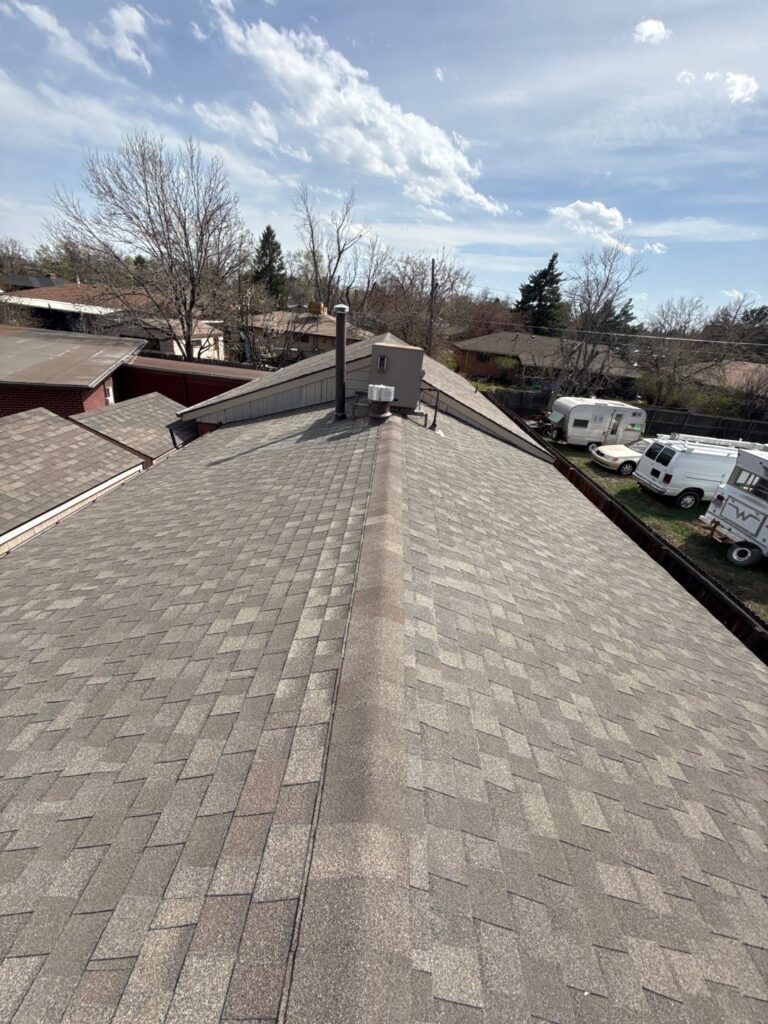
A Billion-Dollar Blow: May 30, 2024, Hailstorm in Denver
On the night of May 30, 2024, the Denver metro area experienced one of the most damaging hailstorms in Colorado’s history. This severe weather event, which struck after dark, swept through Denver, Commerce City, Aurora, and Broomfield, inflicting an estimated $1.9 billion in damages according to the National Oceanic and Atmospheric Administration (NOAA). That figure positions it as the second costliest hailstorm Colorado has ever witnessed—trailing only the 2017 catastrophe that reached $2.3 billion in damage.
The late-night nature of the storm meant that many residents were unaware of the destruction until morning. What initially looked like snowfall blanketing driveways and rooftops was actually layers of large hailstones—some as big as baseballs. The storm was relentless and swift, leaving behind a wake of battered homes, cracked windows, dented vehicles, and severely compromised roofing systems.
Hidden Roof Damage: The Quiet Aftermath
In the days following the storm, the true extent of the devastation became clear. Roofs were among the hardest-hit components, especially those with asphalt shingles. Unlike broken windows or dented cars, hail-related roofing damage often remains invisible from the ground and may take months or even years to result in noticeable leaks. By that time, homeowners may miss the window for filing insurance claims, which can be a costly oversight.
Roofing experts emphasize that even roofs appearing intact from the curb may have underlying structural harm. Hail impacts can crack shingle seals, loosen granules, or puncture protective layers—damage that accelerates deterioration over time. That’s why a thorough, professional inspection is essential following such an event.
Insurance Timelines and the Risk of Delay
One critical factor complicating recovery after a storm is the limited claim period provided by insurance companies. Most policies require storm damage to be reported within 6–12 months. Unfortunately, many homeowners wait until they spot interior water stains or mold growth—signs that the damage has worsened—before calling a contractor.
This delay can result in denied claims, leaving homeowners solely responsible for the cost of full roof replacements or structural repairs. With nearly $2 billion in storm damages recorded, insurance providers will be stringent with documentation and timelines, making it essential to act early.
Key Areas Affected Across the Denver Metro
Reports confirmed extensive hail impact across a wide geographic range:
- Denver: Central neighborhoods experienced significant roof shingle loss and broken skylights.
- Aurora: Eastern suburbs reported vehicle destruction and extensive roof pitting.
- Commerce City: Witnessed some of the largest hailstones, causing widespread damage to both homes and businesses.
- Broomfield: Many homes displayed signs of gutter displacement, fascia damage, and broken solar panels.
In each of these areas, the storm’s timing—well past bedtime—meant that roofs were exposed to uninterrupted pelting for hours, with no opportunity for real-time mitigation.
Why Roof Inspections Are Crucial After a Hailstorm
Proactive inspections are not just about identifying leaks—they’re about preventing future structural failures. Certified roofing contractors trained in post-hail assessments use specialized tools and safety procedures to:
- Detect micro-fractures in shingles.
- Identify soft spots indicating absorbed impact.
- Check flashing, underlayment, and ventilation points for compromise.
In a post-storm environment, partnering with a reputable roofing company in Denver is critical. Many fly-by-night contractors flood the market after major storms, offering fast fixes without long-term warranties or licensing.
For residents of Denver, Colorado, the team at Tried and True Roofing provides professional inspections and storm-related roof repair services that align with insurance documentation standards. Their team has a strong track record in supporting homeowners through complex claims and full-system restorations.
Preparing for Future Storms
Given Colorado’s reputation as one of the most hail-prone states in the country, homeowners need to prepare now for what’s to come. According to NOAA, 2024 is already on track to be among the most active severe weather years nationwide, with 19 storms topping the billion-dollar threshold—and the season is far from over.
Homeowners can reduce vulnerability and insurance headaches by:
- Installing impact-resistant roofing materials like Class 4 shingles.
- Scheduling routine inspections after every major storm.
- Keeping photo documentation of their roof’s condition before and after hail events.
- Understanding their policy terms and knowing their deductible before storm season hits.
Conclusion
The May 30, 2024 hailstorm was not just another chapter in Colorado’s turbulent weather history—it was a defining moment for roofing in Denver. With billions in damages and countless homes affected, this storm revealed just how vital it is to address roof health promptly and professionally. From hidden cracks to accelerated aging, post-hail inspections are essential to long-term protection and financial security. Homeowners across the metro area should act now to assess their roofing systems and fortify against what may come next.

